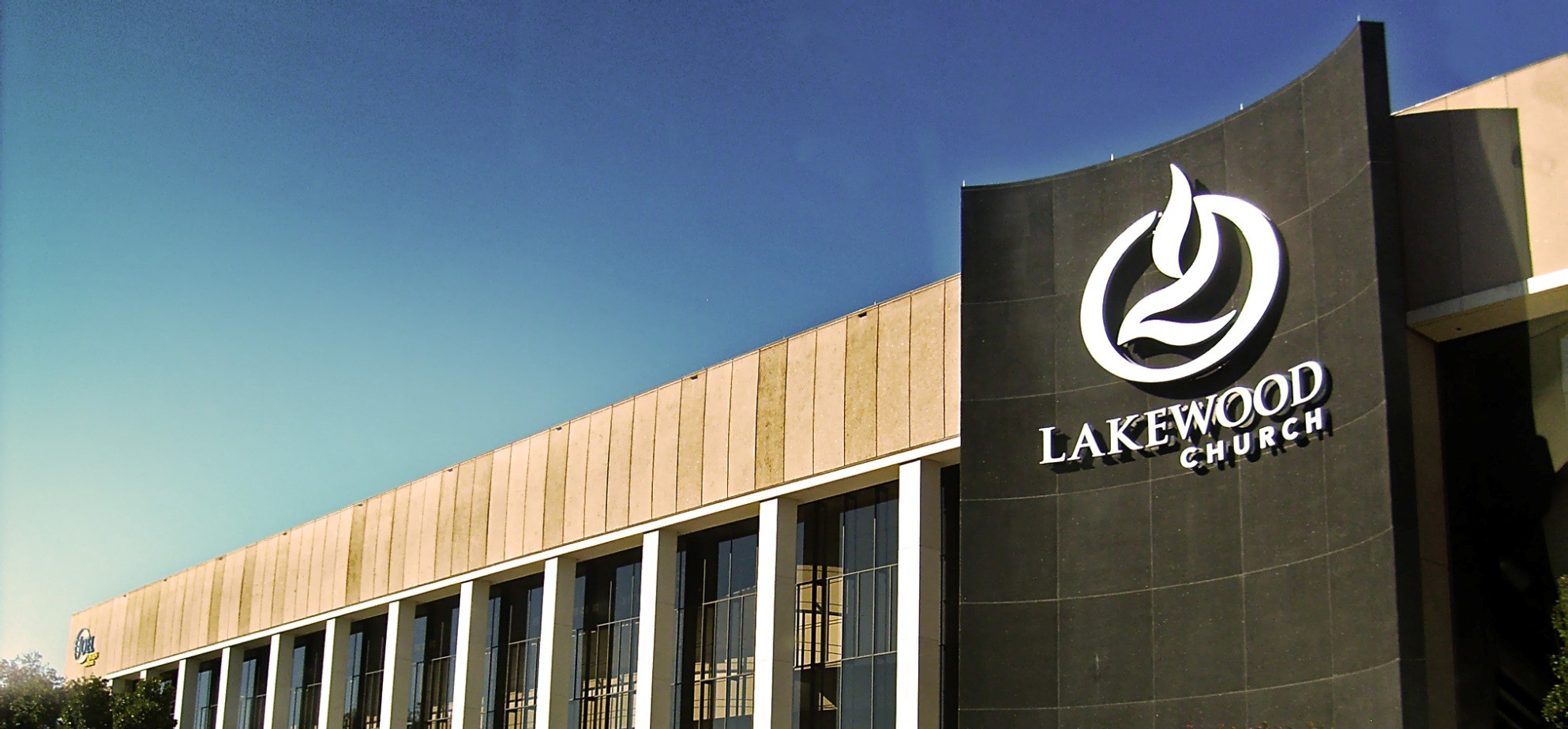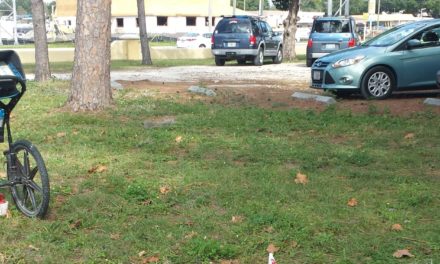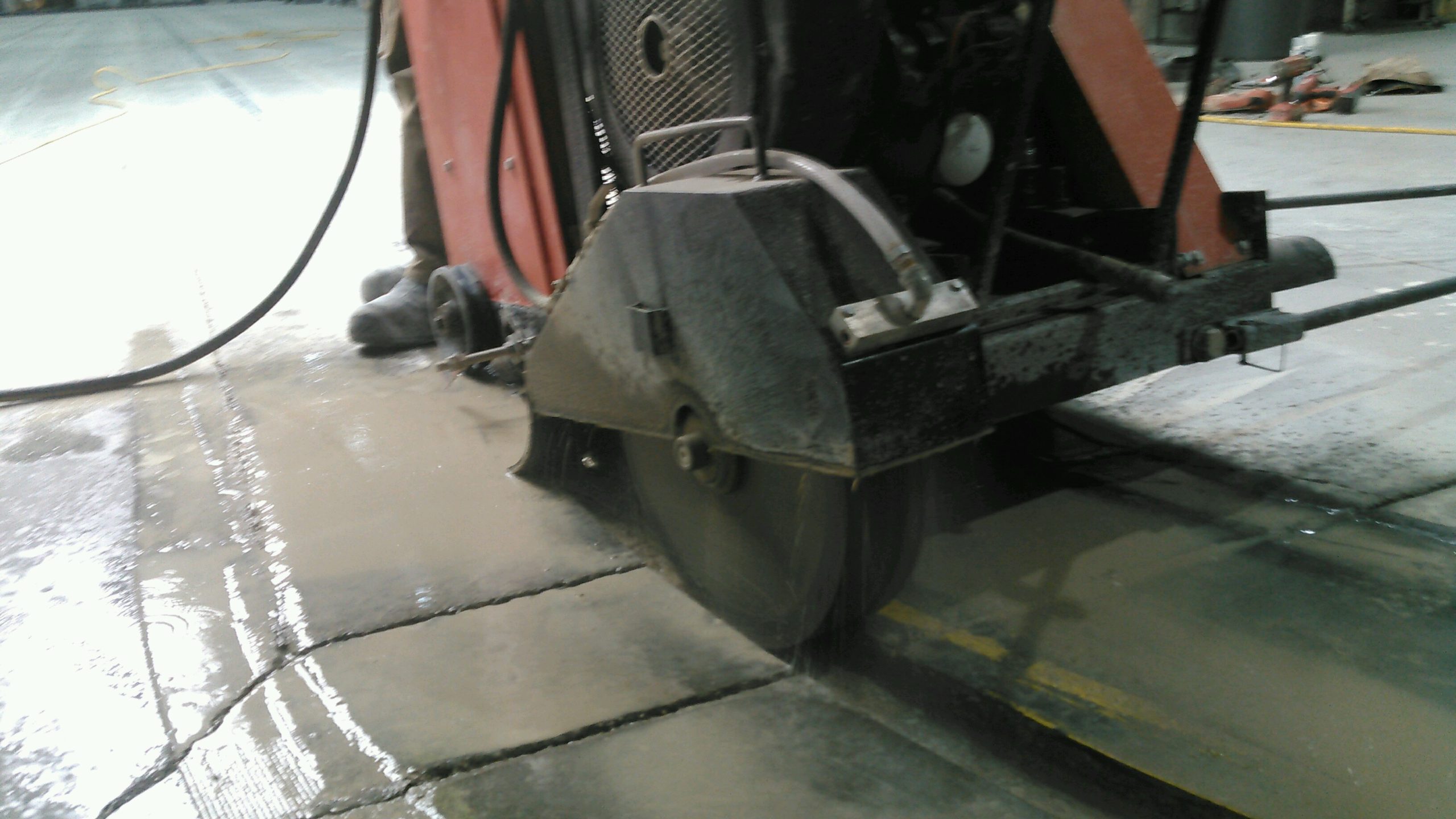
Divine Intervention

Cutting Contractor Lets in the Light at Megachurch
A CSDA member recently answered the calling of a general contractor performing renovation work at a large venue in Houston, Texas. The work included the cutting, removal and hauling of three existing pre-cast panels for the addition of a curtain wall window on the fifth floor of the building. The cutting area was approximately 80 feet above a finished floor and the cut sections measured 10 feet tall, 9 feet wide and weighed 7,500 pounds each.

An electric wall saw was used to make a series of horizontal cuts, averaging 9 feet in length.
The job location was Lakewood Church, a 16,000-seat venue that was once home to the NBA’s Houston Rockets. The church moved into the building in 2005 and has invested over $95 million in renovation work. The area of the building where this work was taking place had been earmarked for administrative offices, so a window opening was needed.
It was specified that the panels be saw cut, as this method would allow the surrounding parts of the pre-cast panels to remain in place for the aesthetics of the building and to preserve the structural integrity of the roof. Adjacent areas of the building were already occupied and there was a service road directly outside the building, so it was important that the window opening be created with low vibration and minimal debris to prevent damage to these areas. The general contractor, Tellepsen Builders of Houston, chose a specialist concrete cutter for the work.
“Our plan was to drill two holes in each panel for lifting so that we could take them out in whole sections using a crane. The church owners did not want the space inside the building to be exposed to the elements for a long period of time or nearby offices affected, so our work had to be fast, clean and safe,” said Chris Allen, estimator and project manager for CSDA member Aggregate Technologies, Inc. (ATI) based in Houston.

Cut sections were rigged and removed by crane to the floor below.
Before the work could begin, however, the roads below the work area had to be closed off from any foot or vehicle traffic. A service road, an exit lane from the church’s parking garage and an entrance to a nearby high-occupancy vehicle lane, all had to be shut down. The team from ATI utilized a swing stage, mobile crane and other equipment to complete the work, which was done during night hours. Due to ongoing daytime services at Lakewood Church and access requirements for Greenway Plaza, a mixed-use venue next to the church building, the crane had to set up and demobilize each night of the work. In addition, limited road access and a difficult gradient meant the crane could not be positioned in front of the work area. Therefore, the crane was set up around the corner and the crane operator did not have direct sight of the panels. Accordingly, clear and accurate communication between the rigging crew and crane operator was critical to ensure the safe and efficient removal of the panels when cut.
An ATI operator used a Cardi core drill to create two holes per panel for lifting. Each hole measured 4 inches in diameter through the 6.5-inch-thick concrete wall panel and was positioned close to the top of the panels for safe rigging. With operators positioned on the outside and inside of the building, straps were run through the two core holes to secure the panel to the crane. This would help restrict the panel’s movements while cutting and ensure the cut section did not break away from the building prematurely.
The first cutting task was to remove the waterproofing material between the first panel section and the adjacent section that was to remain using specialized sawing equipment with a metal cutting blade. An operator then set up a Pentruder electric wall saw fitted with a diamond blade from Husqvarna to perform a 9-foot horizontal cut. This separated the top of the specified cut section from the rest of the panel. Another 9-foot horizontal cut was made 11 feet down the wall, parallel to the first. These cuts each took around five minutes to complete through the 6.5-inch-thick concrete, including setup and take down.

The three pre-cast panel sections weighed around 7,500 pounds each and
were broken into smaller pieces before being hauled from site.
At this stage, the only supports holding the panel in place were two metal weld tabs on the bottom of the panel and the crane. An operator was positioned outside the building on a swing stage, communicating with the crane operator by radio. It was their job to confirm all parties were ready to begin lifting the panel before cutting the metal tabs loose. ATI cut the two metal tabs and began to tilt the cut panel section out of place, then it was lifted out by the crane. Once the panel was on the ground, the cutting contractor used a Husqvarna slab saw to cut the panel into smaller, more manageable pieces. These pieces were lifted onto the company’s dump truck to be hauled from site.
ATI repeated this process for two more panel sections of similar sizes and the work was completed in approximately one-and-a-half shifts—around half the time originally allocated for the work. The cutting contractor performed around 30 feet of 6.5-inch-deep wall saw cuts, created six 4-inch-diameter rigging holes and used a slab saw on the ground to split the panels in half for hauling.
“My main concern was removing only a portion of the pre-cast concrete wall and wondering what would hold the remaining portion in place. Fortunately, a structural engineer designed the plan to remove the panel sections and confirmed the sections that were to remain would be structurally sound,” said Allen. “The roadways below the panels were an issue too, as there was no way to reach the work area with any ground lifts due to the slope of the road and the height required. We had to use a swing stage from the roof to access the exterior of the panels.”
This presented further issues to Allen and his team, as there were now more obstacles for the crane operator to work around—the cable of the swing stage, the safety lines of the workers on the swing stage and the presence of workers right next to the cut section while it was being removed. Before work started, each worker and the company’s safety director had to check safety harnesses, lift lines and anchor points for damage. The project was completed with no safety incidents and ahead of schedule.
“The original schedule assumed three nights to complete, but due to ATI’s careful selection of experienced staff, coordination and pre-planning, the contractor was able to safely complete its work midway through the second night. I would like to personally congratulate ATI for being an integral subcontractor in the successful completion of the central fifth floor office renovation at Lakewood Church,” said Martin Jasinski, project manager for Tellepsen Builders.
As a result of this job, ATI anticipates further work from the general contractor. The renovation of Lakewood Church’s administrative offices continued as planned and staff now ‘see the light’ thanks to the concrete cutting work performed by this CSDA member.
The church was established in 1959 and moved into its first permanent home, an abandoned feed store, that same year. In the decades that followed, the church grew exponentially under the leadership of Pastor John Osteen and moved to different buildings to accommodate larger congregations. During the 1980s, Lakewood Church also began a television broadcast to the Houston area. John Osteen passed away in 1999 and his son, Joel, became pastor. The church continued to grow and in 2005, Joel moved Lakewood Church into its present location, the former Compaq Center, a 16,000-seat arena that was once home to the Houston Rockets professional basketball team. Today, Joel and his wife, Victoria, lead what has become known as a “megachurch” and are household names in the U.S. and beyond. Each week, Joel preaches to more than 38,000 attendees and his weekly sermon is broadcast into every U.S. television market. It is viewed by seven million Americans each week and his weekly broadcast is seen in almost 100 nations around the world.
Company Profile
Aggregate Technologies, Inc. has been a CSDA member since 2013 and is based in Houston, Texas. The company has been in business for 18 years, has 30 employees and 20 trucks. Aggregate Technologies, Inc. services the entire U.S. and offers the services of core drilling, wall sawing, wire sawing, flat sawing, selective demolition, pile cutting, breaking and hauling and ground penetrating radar. The company employs CSDA Certified Operators.
Resources
General Contractor:
Tellepsen Builders
Sawing and Drilling Contractor:
Aggregate Technologies, Inc.
Houston, Texas
Phone: 281-579-7229
Email: chrisa@aggregatetechnologies.com
Website: www.aggregatetechnologies.com
Methods Used: Wall Sawing, Core Drilling














